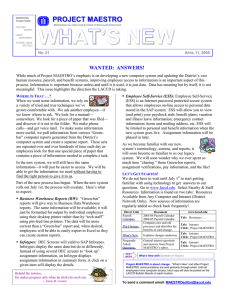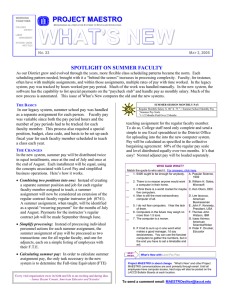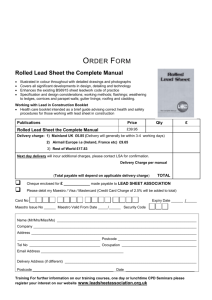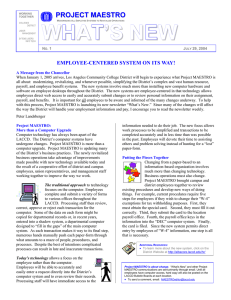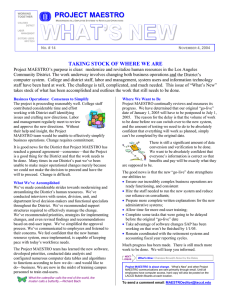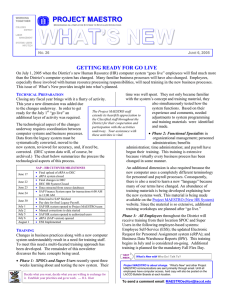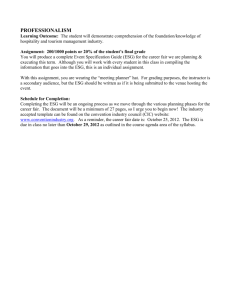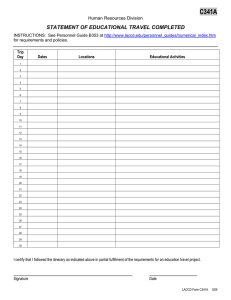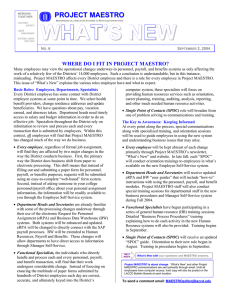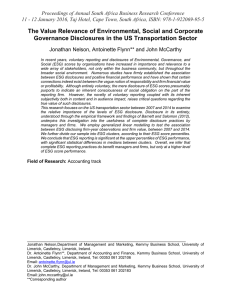WHAT’S NEW P R O
advertisement
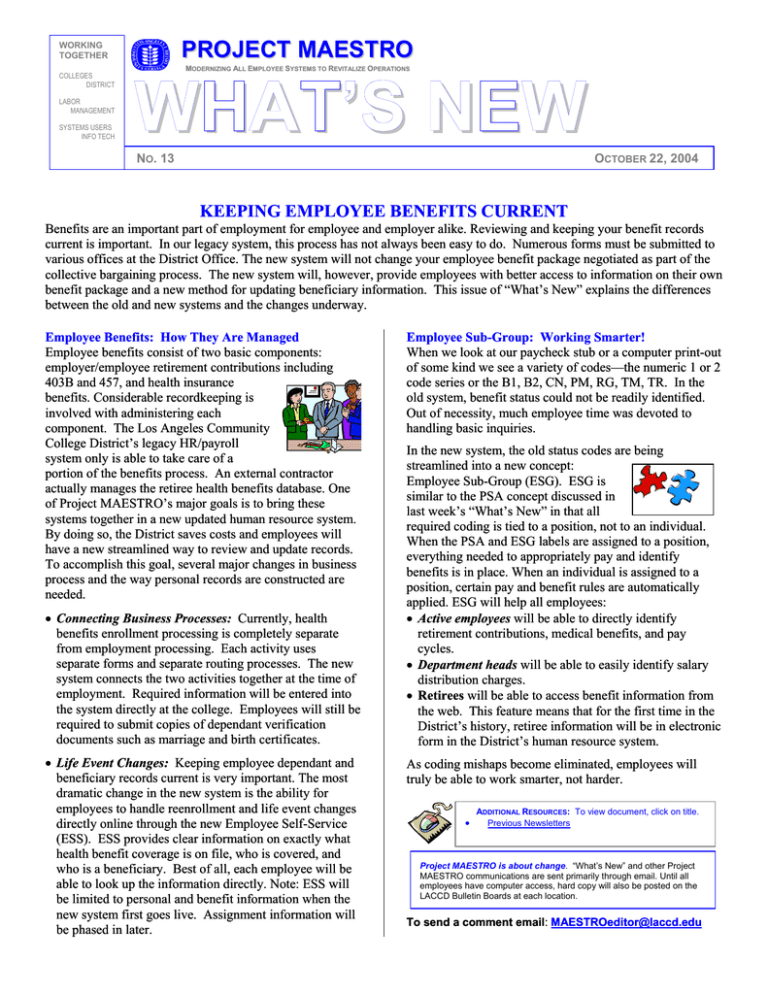
PROJECT MAESTRO WORKING TOGETHER COLLEGES DISTRICT LABOR MANAGEMENT SYSTEMS USERS INFO TECH MODERNIZING ALL EMPLOYEE SYSTEMS TO REVITALIZE OPERATIONS WHAT’S NEW NO. 13 OCTOBER 22, 2004 KEEPING EMPLOYEE BENEFITS CURRENT Benefits are an important part of employment for employee and employer alike. Reviewing and keeping your benefit records current is important. In our legacy system, this process has not always been easy to do. Numerous forms must be submitted to various offices at the District Office. The new system will not change your employee benefit package negotiated as part of the collective bargaining process. The new system will, however, provide employees with better access to information on their own benefit package and a new method for updating beneficiary information. This issue of “What’s New” explains the differences between the old and new systems and the changes underway. Employee Benefits: How They Are Managed Employee benefits consist of two basic components: employer/employee retirement contributions including 403B and 457, and health insurance benefits. Considerable recordkeeping is involved with administering each component. The Los Angeles Community College District’s legacy HR/payroll system only is able to take care of a portion of the benefits process. An external contractor actually manages the retiree health benefits database. One of Project MAESTRO’s major goals is to bring these systems together in a new updated human resource system. By doing so, the District saves costs and employees will have a new streamlined way to review and update records. To accomplish this goal, several major changes in business process and the way personal records are constructed are needed. • Connecting Business Processes: Currently, health benefits enrollment processing is completely separate from employment processing. Each activity uses separate forms and separate routing processes. The new system connects the two activities together at the time of employment. Required information will be entered into the system directly at the college. Employees will still be required to submit copies of dependant verification documents such as marriage and birth certificates. • Life Event Changes: Keeping employee dependant and beneficiary records current is very important. The most dramatic change in the new system is the ability for employees to handle reenrollment and life event changes directly online through the new Employee Self-Service (ESS). ESS provides clear information on exactly what health benefit coverage is on file, who is covered, and who is a beneficiary. Best of all, each employee will be able to look up the information directly. Note: ESS will be limited to personal and benefit information when the new system first goes live. Assignment information will be phased in later. Employee Sub-Group: Working Smarter! When we look at our paycheck stub or a computer print-out of some kind we see a variety of codes—the numeric 1 or 2 code series or the B1, B2, CN, PM, RG, TM, TR. In the old system, benefit status could not be readily identified. Out of necessity, much employee time was devoted to handling basic inquiries. In the new system, the old status codes are being streamlined into a new concept: Employee Sub-Group (ESG). ESG is similar to the PSA concept discussed in last week’s “What’s New” in that all required coding is tied to a position, not to an individual. When the PSA and ESG labels are assigned to a position, everything needed to appropriately pay and identify benefits is in place. When an individual is assigned to a position, certain pay and benefit rules are automatically applied. ESG will help all employees: • Active employees will be able to directly identify retirement contributions, medical benefits, and pay cycles. • Department heads will be able to easily identify salary distribution charges. • Retirees will be able to access benefit information from the web. This feature means that for the first time in the District’s history, retiree information will be in electronic form in the District’s human resource system. As coding mishaps become eliminated, employees will truly be able to work smarter, not harder. • ADDITIONAL RESOURCES: To view document, click on title. Previous Newsletters Project MAESTRO is about change. “What’s New” and other Project MAESTRO communications are sent primarily through email. Until all employees have computer access, hard copy will also be posted on the LACCD Bulletin Boards at each location. To send a comment email: MAESTROeditor@laccd.edu
